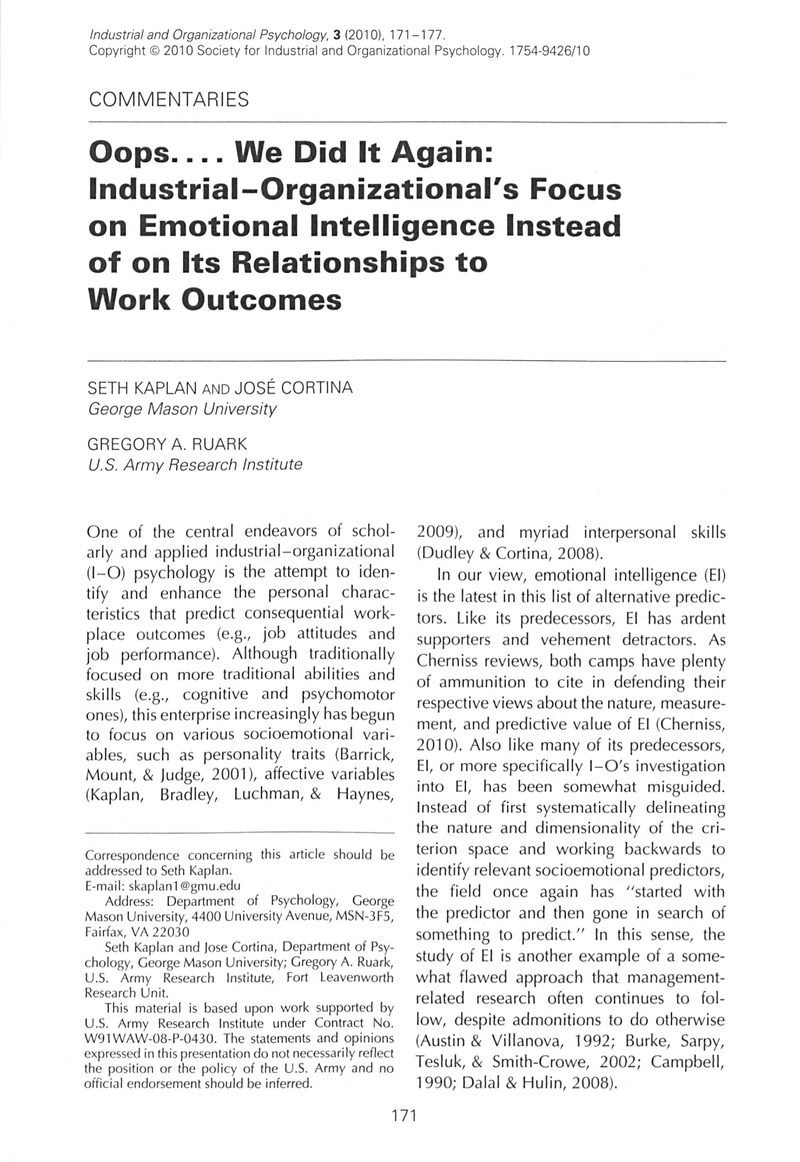Crossref Citations
This article has been cited by the following publications. This list is generated based on data provided by Crossref.
Cherniss, Cary
2010.
Emotional Intelligence: New Insights and Further Clarifications.
Industrial and Organizational Psychology,
Vol. 3,
Issue. 2,
p.
183.
Ployhart, Robert E.
and
Schneider, Benjamin
2012.
The Oxford Handbook of Personnel Assessment and Selection.
p.
48.
Husin, Wan Nurul Izza Wan
Santos, Angeli
Ramos, Hazel Melanie
and
Nordin, Mohamad Sahari
2013.
The Place of Emotional Intelligence in the ‘Intelligence’ Taxonomy: Crystallized Intelligence or Fluid Intelligence Factor?.
Procedia - Social and Behavioral Sciences,
Vol. 97,
Issue. ,
p.
214.
McCleskey, Jim
2014.
Emotional intelligence and leadership.
International Journal of Organizational Analysis,
Vol. 22,
Issue. 1,
p.
76.
Kaplan, Seth
Cortina, Jose
Ruark, Gregory
LaPort, Kate
and
Nicolaides, Vias
2014.
The role of organizational leaders in employee emotion management: A theoretical model.
The Leadership Quarterly,
Vol. 25,
Issue. 3,
p.
563.
2018.
The Emerald Review of Industrial and Organizational Psychology.
p.
767.
Coleman, Andy
and
Ali, Azhar
2022.
Emotional Intelligence: Its importance to HE professional services team members during challenging times.
Management in Education,
Aitken, John A.
Cannon, Jessie A.
Kaplan, Seth A.
and
Kim, Heekyung
2024.
The Benefits of Work: A Meta-analysis of the Latent Deprivation and Agency Restriction Models.
Journal of Business and Psychology,
Vol. 39,
Issue. 4,
p.
821.



